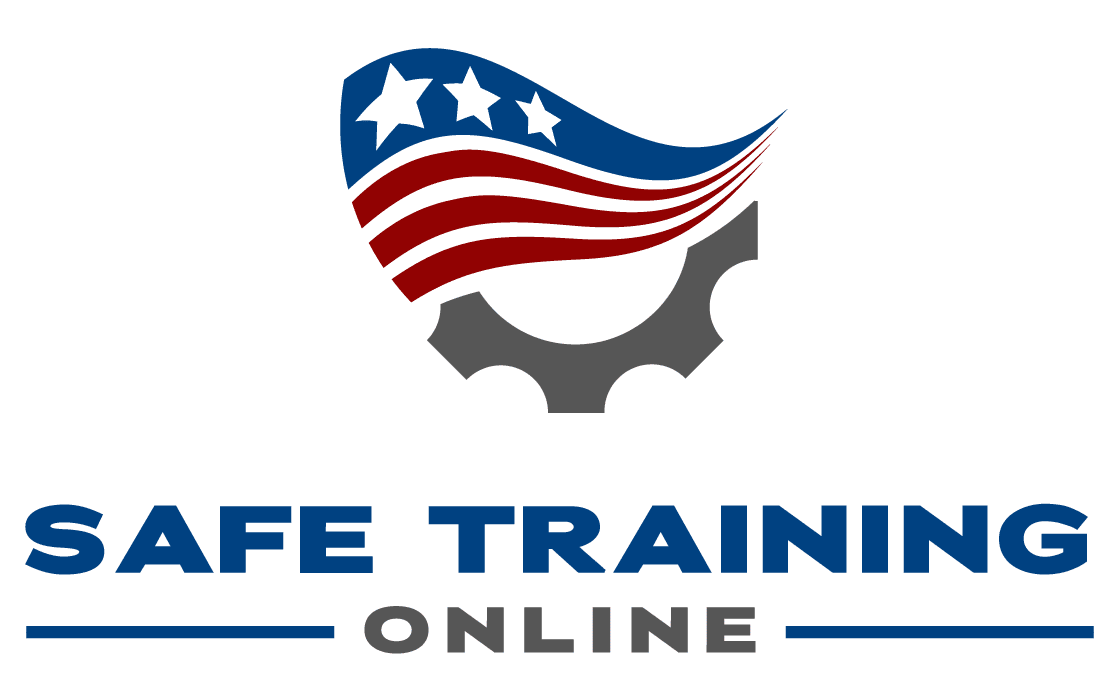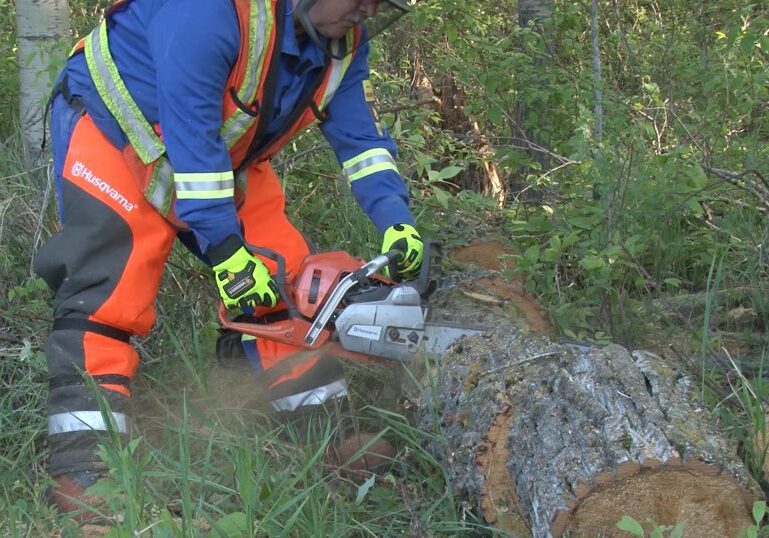100% SATISFACTION GUARANTEE!
OVER 2 MILLION CERTIFIED LEARNERS!
Other Features

Largest Online Course Selection in the Country

Create Free Group Accounts
No Setup or
Monthly Fees

Free User
System Tracking

Available 24/7, Train From Work or Home
Most Popular Courses
$99.95 USD
This Aerial Platform Training Online course will show you how to reduce the risks related to straight telescoping boom, articulating boom, a…
$79.95 USD
Off-Highway Vehicles (OHVs) are also described as ATVs (All Terrain Vehicles) and UTVs (Utility Terrain Vehicles or ‘Side by Side’…
$26.99 USD
All professional flatbed truck drivers should be experienced in cargo loading, cargo inspection, and cargo securement. This Cargo Securement …
$59.99 USD
Operating a chainsaw is extremely dangerous, even in normal working conditions. Safe usage should be of the highest importance to employers, …
$59.99 USD
Those who work in confined spaces should be aware of the risks and hazards involved. By knowing what to look for, workers will their…
$99.99 USD
This Online Fall Protection Training Course will instruct you on how fall injuries occur, ways to eliminate and prevent hazards, various for…
$24.99 USD
This Forklift Operator Training Online course will introduce employees to the forklift machine, explain its capabilities and limitations, and…
$49.99 USD
This HazCom Online Course teaches anyone who works with hazardous chemical products in the workplace how to be informed of the system used …
$29.95 USD
This Ladder Safety Training Online program teaches the common dangers to be aware of when using a ladder, how to choose the right ladder for
$79.95 USD
This online Landscaping Safety Training course will discuss the safe operation principles of the following equipment: lawnmowers, trimmers, …
$24.99 USD
This lockout tagout training OSHA-based course will certify that you or your employees are meeting the training, inspection, and record keeping...
$79.99 USD
This Overhead Crane Training Online course covers different types of overhead cranes and lifting devices, how to inspect and safely operate them…
$45.95 USD
Certify your employees to safely handle propane fuel tanks used in commercial and industrial settings. This Online Propane Cylinder Handling…
$74.00 USD
In the United States, Pipeline Construction Safety Training (PCST) is essential for ensuring the safety of workers involved in the construction, maintenance, and operation of pipelines....
$24.99 USD
Breathing safely in a hazardous environment requires crucial training and protective equipment. Participants in this Respiratory Protection …
$99.95USD
This Skid Steer Training Online course will teach operators a range of essential topics to ensure operators are well prepared for safe and efficient skid steer operation.
$99.95 USD
This Telehandler Training Online course teaches the competency needed to operate a telehandler (also called a telescopic handler) …
$44.95USD
Ensure you and your employees have the knowledge and skills to work in temporary traffic control environments in a safe manner…
$59.95USD
This Train the Trainer Online Certification program is designed for new and experienced trainers who want to improve their instructional techniques...
$699.95USD
This Train the Trainer Aerial Lift Course is an OSHA compliant program and contains all necessary teaching materials to help you effective teach this program to your employees…
$725.00 USD
This Train the Trainer Bucket Truck Course is an OSHA compliant program and contains all necessary teaching materials to help you effective teach this program to your employees....
$59.99USD
This online Tree Trimming Safety Course covers safety precautions for tree trimming projects. When tree trimming you may be...
Over 2,000 courses available
Certificate ready for print/download upon course completion
100% satisfaction guarantee
OSHA Safety Training Courses
Safe Training Online will assist you by training your employees to work in a safer and more productive workplace. Our online safety training programs meet OSHA standards and are designed to be an effective resource for the health and safety of your employees. We provide one of the largest selections of OSHA Safety Training Courses Online to assist you with your OSHA-required annual training. We also offer over 100 online safety training courses in Spanish to assist you in your workplace safety training.
What makes our services easy to use?
- No need to visit any training center and you can get certified training completed on your own time and schedule.
- Most of our online safety courses vary from 30 minutes to 2 Hours.
- With us, you will get professionally guided safety classes online at an affordable price.
- We provide OSHA-required annual training with a wide selection of professionally designed safety courses.
Online OSHA (Occupational Safety and Health Administration) training courses can be effective for American workplaces for several reasons:
Accessibility: Online OSHA training allows employees to access essential safety training materials from anywhere with an internet connection. This accessibility is particularly valuable for organizations with remote or geographically dispersed workforces.
Cost-Effective: Online courses often reduce costs associated with traditional in-person training, such as travel expenses, venue rentals, and printed materials. This cost savings can be significant for both large and small businesses.
Convenience: Employees can complete online OSHA training at their own convenience, which minimizes disruptions to their work schedules. They can access the courses outside of regular working hours, making it easier for them to fit training into their busy lives.
Self-Paced Learning: Online OSHA courses typically offer self-paced learning, allowing employees to progress through the material at their own speed. This accommodates different learning styles and ensures that employees can thoroughly grasp the content.
Consistency: Online courses provide standardized content, ensuring that all employees receive the same information and training materials. This consistency is crucial for maintaining a safe and compliant workplace.
Record Keeping: Many online training platforms track and record employee progress and completion of courses. This feature simplifies record-keeping for organizations, making it easier to demonstrate compliance with OSHA regulations during inspections and audits.
Interactive Content: Online courses often incorporate interactive elements such as quizzes, videos, and simulations, which can engage learners more effectively than traditional lecture-style training.
Immediate Feedback: Online training can provide immediate feedback on quiz and test results, allowing employees to identify areas where they may need additional instruction and reinforcement.
Regulatory Compliance: Online OSHA training courses are designed to align with OSHA regulations and requirements. They are regularly updated to reflect any changes in standards, ensuring that employees receive the most current information.
Scalability: Online training can easily scale to accommodate a growing workforce, making it suitable for businesses of all sizes.
Multilingual Options: Many online OSHA training platforms offer courses in multiple languages, ensuring that employees from diverse backgrounds can access and understand the training materials.
Environmental Impact: Online training is generally more environmentally friendly than traditional printed materials, as it reduces the need for paper and other resources.
Its essential for organizations to choose reputable training providers like SAFE Training Online that offers many advantages with courses that are recognized by OSHA and tailored to specific industries and workplace needs. Additionally, some OSHA requirements may necessitate hands-on or in-person training in addition to online instruction, depending on the nature of the hazards and job roles in the organization.
FAQs
Computer Hardware Requirements: PC (Windows 8 or higher) 2.0 GHZ or faster 512 MB Ram Minimum 256 Mb Video Ram (VRAM) Computer Speakers or Headphones Sound Card MAC (OS Mountain Lion or Higher): 2.0 GHZ or faster 512 MB Ram 256 MB Video Ram (VRAM) with 16 million Colours+ Computer Speakers or Headphones Sound Card Minimum Desktop Resolution: 1280 x 600 Computer Software Requirements PC OR MAC: Must have an internet connection of at least 1.5 Mbps for proper course viewing Adobe Flash Player Version 20 or higher installed for Flash-based training Internet Explorer 11 or higher Mozilla Firefox 50 or higher Google Chrome 54 or higher Apple Safari 8 or higher JavaScript MUST be enabled Acrobat Reader (For certificate viewing)


































